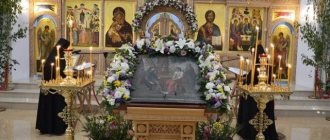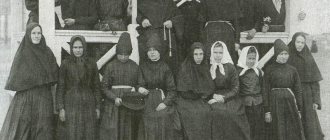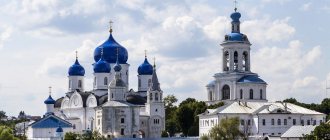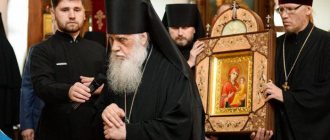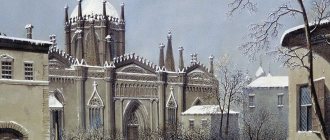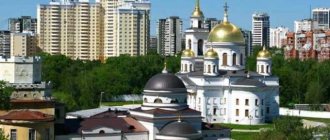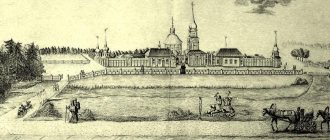Mir
Russia Voronezh Region Kostomarovsky Spassky Convent Map loading in progress...
{"format":"leaflet","minzoom":false,"maxzoom":false,"limit":50,"offset":0,"link":"all","sort":[""], "order":[],"headers":"show","mainlabel":"","intro":"","outro":"","searchlabel":"\u2026 \u0441\u043b\u0435\ u0434\u0443\u044e\u0449\u0438\u0435 \u0440\u0435\u0437\u0443\u043b\u044c\u0442\u0430\u0442\u044b","default":"","import-annotation":false,"width ":"auto","height":"350px","centre":{"text":"","title":"""link":"""lat":50.6842139999999972133082337677478790283203125,"lon": 39.746228999999999587089405395090579986572265625,"icon":""},"title":"","label":"","icon":"","lines":[],"polygons":[],"circles":[ ],"rectangles":[],"copycoords":false,"static":false,"zoom":8,"defzoom":14,"layers":["OpenStreetMap"],"image layers":[] ,"overlays":[],"resizable":false,"fullscreen":true,"scrollwheelzoom":true,"cluster":false,"clustermaxzoom":9,"clusterzoomonclick":true,"clustermaxradius":80, "clusterspiderfy":true,"geojson":"","clicktarget":"","showtitle":true,"hidenamespace":false,"template":"","userparam":"","activeicon": "","pagelabel":false,"ajaxcoordproperty":"","ajaxquery":"","locations":[{"text":"\u003Cb\u003E\u003Ca href=\"/palomnik/%D0% 9A%D0%BE%D1%81%D1%82%D0%BE%D0%BC%D0%B0%D1%80%D0%BE%D0%B2%D1%81%D0%BA%D0%B8% D0%B9_%D0%A1%D0%BF%D0%B0%D1%81%D1%81%D0%BA%D0%B8%D0%B9_%D0%B6%D0%B5%D0%BD%D1% 81%D0%BA%D0%B8%D0%B9_%D0%BC%D0%BE%D0%BD%D0%B0%D1%81%D1%82%D1%8B%D1%80%D1%8C\ » title=\»\u041a\u043e\u0441\u0442\u043e\u043c\u0430\u0440\u043e\u0432\u0441\u043a\u0438\u0439 \u0421\u043f\u0430\u0441\u0441\u0 43a\u0438\u0439\ u0436\u0435\u043d\u0441\u043a\u0438\u0439 \u043c\u043e\u043d\u0430\u0441\u0442\u044b\u0440\u044c\u003E\u041a\u043e\u0441\u 0442\u043e\u043c\u0430\ u0440\u043e\u0432\u0441\u043a\u0438\u0439 \u0421\u043f\u0430\u0441\u0441\u043a\u0438\u0439 \u0436\u0435\u043d\u0441\u043a\u0 438\u0439\u043c\u043e\u043d\ u0430\u0441\u0442\u044b\u0440\u044c\u003C/a\u003E\u003C/b\u003E","title":"\u041a\u043e\u0441\u0442\u043e\u043c\u0430\u0440\u043e\ u0432 \u0441\u043a\u0438\u0439 \u0421\u043f\u0430\u0441\u0441\u043a\u0438\u0439 \u0436\u0435\u043d\u0441\u043a\u0438\u0439 \u043c \u043e\u043d\u0430\u0441\u0442 \u044b\u0440\u044c","link":"","lat":50.6842139999999972133082337677478790283203125,"lon":39.7462289999999995870894053950905799865722 65625,"icon":""}],,"imageLayers":[]}
50.492579; 39.717375
Russia, Voronezh region, Podgorensky district
Voronezh region
Russia
Convent of the Russian Orthodox Church (Voronezh Metropolis, Rossoshansk and Ostrogozh Diocese). Located in the Voronezh region, near the village of Kostomarovo, which is part of the Yudinsky rural settlement of the Podgorensky district.
History[edit]
According to the hypothesis put forward at the end of the 19th century by researchers P.V. Nikolsky and V.N. Tevyashov, the monastery arose in the middle of the 17th century, and its creators were Little Russian monks who moved to the Don steppes along with the Dnieper Cossacks fleeing persecution and did not want to recognize the union. However, there are other versions. According to which, this monastery may claim to be the oldest place among the monasteries of Russia.
Moreover, this place may be the starting point for the spread of Christianity in what is now Russia. This is justified by the following hypothesis: During the time of iconoclasm, many Christians fled here from Byzantium from persecution, who, by the way, became the enlighteners of this region. This was probably in the 8th century AD...
The first reliable evidence of the Divnogorsk monastery, neighboring Kostomarovsky, dates back to the middle of the 17th century. The first written mention of the Kostomarovsky caves appeared at the end of the 18th - beginning of the 19th century. It is believed that the Kostomarovsky caves during this period were a skete of the Belogorsk monastery. After the revolution of 1917, the cave monasteries - both the Kostomarovsky monastery and the Assumption Divnogorsky and Resurrection Belogorsky monasteries - were closed. But some ascetics continued to live secretly in the Kostomarovsky caves. Blessed Elder Peter (Eremeenko), a native of the village of Belogorye, was especially famous. At the end of the 1930s, Blessed Peter was sent to Ostrogozh prison, where, according to official data, he died. The memories of local residents about the use of caves as shelters during the Great Patriotic War have been preserved. For about six months, from July 1942 to January 1943, the surroundings of the monastery were occupied.
In 1946, permission was received to hold services in the Spasskaya Cave Church, but in 1959, after the start of Khrushchev’s anti-religious campaign, this temple was closed again.
Community of traditions
Researchers of the caves of the Kostomarovsky Spassky Monastery note that in terms of their functional use, construction principle, and internal structure, they largely correspond to the ancient underground structures of Cappadocia. In both cases, the main place belongs to the temple, around which are the tombs of the deceased monks, and behind them are the fraternal cells. Such similarities make it possible to speak with a high degree of probability, firstly, about the commonality of Christian traditions in the construction of cave monasteries, and, secondly, about their belonging to a single period of history.
Current state[edit]
In June 1997, the monastery was returned to the Church and restored as a convent. The monastery is being restored. In summer, services are held in the cave Spassky Church, in winter - in the above-ground church in the name of the icon of the Most Holy Theotokos “Seeking the Lost” (built at the end of the 20th century). The temperature and humidity in the caves are constant all year round. The cave temple is open to visitors in winter, and there are services there at Christmas and Epiphany. There is a chapel in memory of the blessed martyr Peter (Eremeenko). A nursing building and a refectory were also built. In 2012, a new administrative building was built opposite the temple in the name of the icon of the Most Holy Theotokos “Seeking the Lost.”
The surroundings of the monastery, chalk mountains covered with sparse vegetation, bear some resemblance to the landscapes of the Sinai desert. Here, as in many Russian monasteries, the toponymy of the Holy Land is traditionally present: Mount Golgotha, Mount Tabor, Kidron Stream. In particular, a worship cross was erected on Mount Golgotha near the monastery. Spassky Cave Temple
The most ancient building of the monastery is the Spassky Church, the entrance to which is located at the base of two chalk divas (rocks), connected by a small belfry. The main altar of the temple is consecrated in honor of the Image of the Savior Not Made by Hands. The vaults of this temple rest on eight quadrangular columns, dividing the main volume into three parts. On the left there are two small passages, they lead to the chapel of the martyrs Vera, Nadezhda, Lyubov and Sophia. This chapel received its design after the re-opening of the monastery. Next, the passage goes to the hermit’s cell, tomb and small chapel. The oldest intact part of the vault of the Spasskaya Cave Church, according to some evidence and architectural features, dates back to the 18th or 19th centuries.
The venerated icon of the Mother of God “Blessed Heaven,” called Kostomarovskaya, is kept in the Spassky Church. The icon is the size of a man, written on a sheet of iron by V.V. Shokorev, an academician of the Moscow Academy of Arts, in the second half of the 19th - early 20th centuries. The icon contains traces of six bullets fired by a Red Army soldier. Since 2012, this icon, after restoration, has been in the lower (ground) church named after the icon of the Most Holy Theotokos “Seeking the Lost.”
To the west along the slope there is a cave temple in the name of St. Seraphim of Sarov, founded in 1903. The interior of this temple was created and completed at the end of the 20th century, after the second revival of the monastery. Another temple is called the “Cave of Repentance” (the westernmost one).
The optimal way to the monastery by car at any time of the year is through Liski (or Ostrogozhsk) - to Kamenka-Sonchino-Yudino-Kostomarovo.
Behavior rules
It is prohibited on the territory of the monastery:
- visiting the monastery grounds wearing low-cut or transparent clothing, as well as shorts or short skirts
- enter residential buildings and outbuildings;
- film the clergy, sisters of the monastery, outbuildings, and also film inside churches;
- pick flowers and grass;
- walk along the mountain slopes located behind cave temples and special fences;
- write on the walls of temples, caves and chalk divas;
- place transport on the territory of the monastery
Panoramic view of the Kostomarovsky Convent
Patronal holidays[edit]
- August 29 (16)
Image of the Lord Jesus Christ Not Made by Hands - February 18 (5)
Icons of the Mother of God “Seeking the Lost” - September 30 (17)
Holy martyrs Faith, Nadezhda, Love and their mother Sophia - January 15 (2) and August 1 (July 19)
of St. Seraphim of Sarov - October 9 (September 26) and May 21 (8)
Apostle and Evangelist John the Theologian - July 9 (June 26)
Icon of the Mother of God “Tikhvin”
Excursions to the cave temples of the Spassky Convent
You can take a tour from 9:00 to 17:00 on weekdays or from 11:00 to 16:00 on Saturday/Sunday/holidays, where you will be told about the history of the monastery and miraculous icons.
You must first sign up for a tour by phone: +7(951)-865-74-89 (10:00 to 16:30).
If you are the organizer of a group and are planning to attend an excursion, then you must leave a request at least three days before arrival by phone: +7(473–94)54–637.
You can also visit cave temples on your own during their opening hours:
- On weekdays from 9:00 to 17:00;
- On Saturday, Sunday and holidays from 10:30 to 16:00.
© Mikhail Anisimov
How to get there[edit]
Address:
396532, Voronezh region, Podgorensky district, village. Kostomarovo
From Voronezh you can get to the Holy Spassky Kostomarovsky monastery by rail through Ostrogozhsk to Kamenka station or by intercity bus “Voronezh-Rossosh” from the Voronezh bus station in the South-Western region (Patriotov Ave., 11) to the village of Kamenka, then to the village You can get to Yudino by bus from Kamenka (it doesn’t run now, you can only get there from Podgornaya station, see comment) and walk to Kostomarovo, or by passing transport. The distance from Voronezh to Kostomarovo is approximately 160 kilometers. By car, driving along the Voronezh-Liski-Pukhovo-Kamenka-Kostomarovo route will take about 2 and a half hours. Part of the route from Voronezh to Liski (about 80 km) runs along the M4 Moscow-Rostov highway. After turning right off the highway following the sign for Liski, you will have to walk another 25 km to reach them. The road surface on the Liski-Kamenka section is not very good. You should be careful at dusk. The route Voronezh-Ostrogozhsk-Kamenka-Kostomarovo takes about 3 hours. The road goes straight south across the steppe and is much more picturesque than the Moscow-Rostov federal highway.
Surrounded by hostile tribes
As for the creators of the caves of the Kostomarovsky Spassky Monastery, they also had many enemies from whom they had to hide. For many centuries, hordes of wild nomads rolled into our land from the endless expanses of the steppes, plundering and setting fire to everything they encountered on their way. It was from them that the thickness of their native land was supposed to protect the honest monks, in the depths of which they incessantly prayed to God to send down His holy grace. In the depths of the caves dug by them, many priceless shrines and relics were stored and passed on from generation to generation.
Fugitives who became preachers of Christianity
The above hypothesis has a very convincing rationale. It has long been known that long before the advent of the new era, the mighty and deep Don was a convenient river route connecting the inhabitants of the Greek colonies with the peoples who were part of the northwestern tribes. This fact is confirmed by many archaeological finds and suggests that both the first Christians, persecuted by the Roman rulers, and the victims of iconoclastic repression, fleeing persecution, could follow the previously trodden and well-known path to the Middle Don. They, like no one else, contributed to the spread of Christianity among the pagans who inhabited these lands.
The prominent Russian and Soviet historian A.V. Kartashev (1875-1960) repeatedly asserted that already in the 8th century, in the territory where the Kostomarovsky Spassky Monastery is located today, people from Byzantium carried out active preaching activities, which resulted in the formation of a Christian diocese within the Khazar Khanate, headed by a bishop sent here from Greece.
Purpose of underground structures in the Don region
In passing, it should be noted that the very location of the underground monastery on the territory of the Middle Don, which was once part of the Khazar Khanate, indirectly proves that its caves performed not only religious, but also defensive functions. In a region inhabited by semi-wild and extremely aggressive tribes, they served as a shelter for fugitive Greek monks and, later, for ascetics persecuted by iconoclasts.
It is known that in the Voronezh region the Kostomarovsky Spassky Monastery is not the only center of man-made underground structures. In recent years, about fifty of them have been discovered, and most of them, despite extreme neglect, have preserved evidence that in ancient times they were used as temples or monastic cells hidden underground. This, in particular, is evidenced by decorative symbolism discovered in caves near the village of Gorokhovka (Mamonovsky district) in the form of ocher lines painted on the walls. It exactly corresponds to that found in the Roman catacombs on the graves of martyrs, and in the underground temples of ancient Cappadocia.
Victims of the iconoclastic heresy
Regarding the appearance of an underground temple complex in the Podgorensky district of the Voronezh region, another assumption was made, which was met with approval in scientific circles. The fact is that the history of Byzantium in the 8th-10th centuries. was marked by the widespread spread of the so-called iconoclastic heresy. Both the masses of ordinary citizens of the state and many of its rulers came under its influence.
The cruel persecution imposed by the emperors against the admirers of holy images forced them to flee to Palestine, Syria, as well as to the Caucasus and Crimea. The exiles, whose path lay along the Don, found chalk rocks convenient for building caves on its banks. Having dug extensive grottoes for housing and worship in them, they remained in these areas forever, thus becoming the founders of the Kostomarovsky Spassky Monastery that now exists in the Voronezh region.
Monastic service interrupted for seven centuries
Taking as a working hypothesis the statement that the beginning of the history of the Kostomarovsky Spassky Monastery dates back to the period of the 8th-10th centuries, researchers also express a number of very skeptical assumptions regarding its future fate. The fact is that due to the constant raids of nomads, the environs of the Middle and Lower Don were turned into a Wild Field for almost seven centuries (X-XVII centuries).
Representatives of all other nationalities that had previously lived there were forced to leave the vast territory where wild hordes of Polovtsians, Pechenegs, Khazars, Crimean and Nogai Tatars, as well as Tatar-Mongols ruled uncontrollably. It is difficult to imagine that in such a situation the Christian monastery, which became the predecessor of the Kostomarovsky Spassky Monastery, could exist for a long time. There is no documented information about this period of its history, but, apparently, monastic service was interrupted and was revived only during the time of Emperor Alexei Mikhailovich.
Ghosts from the Cave Depths
The first documentary description of the Kostomarovsky Spassky Monastery dates back to the turn of the 18th and 19th centuries. A significant part of its numerous caves was then occupied by a skete, built by the monks of the nearby Belogorsk monastery, in which, according to available information, there were many schema-monks - monks who observed particularly strict rules of behavior and were required to wear specific vestments. It is curious that even in Soviet times, residents of the village of Kostomarova recalled the stories of their grandfathers about how at night ghost-like people in robes with pointed caps rose from the cave depths.
